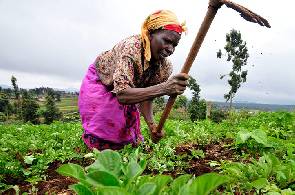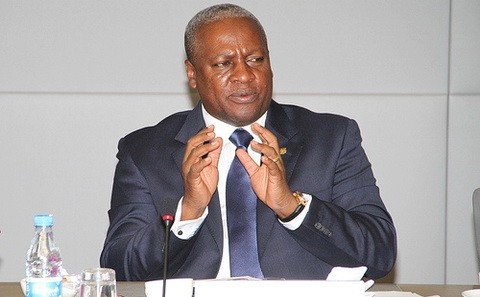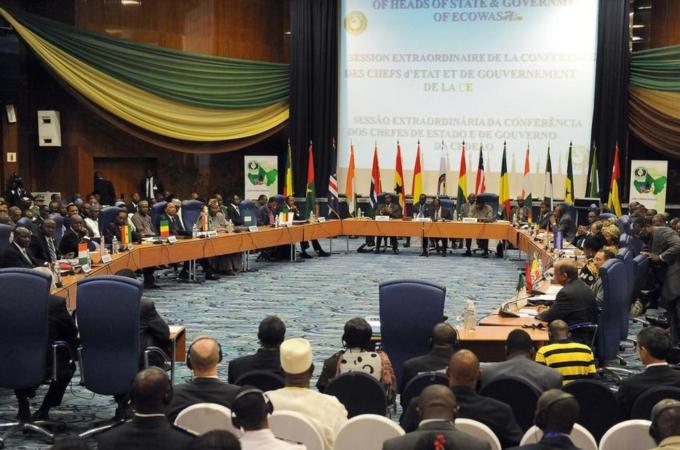 Africa has been urged to do away with the era of “prodigal economics”, whereby it ignores its own agricultural potential and turns itself into a net food importing region, spending a whopping US$35 billion on food imports annually.
Africa has been urged to do away with the era of “prodigal economics”, whereby it ignores its own agricultural potential and turns itself into a net food importing region, spending a whopping US$35 billion on food imports annually.
This is in spite of the fact that 65 percent of the available arable land to feed the 9 billion people expected in the world by 2050 lies in Africa.
Delivering the keynote address to mark the opening of the 2014 African Green Revolution Forum (AGRF 2014) on Tuesday at the African Union (AU) headquarters in Addis Ababa, Dr. Akinwumi Adesina, the Nigerian Minister of Agriculture, noted that although seven of the 10 fastest-growing economies in the world are in Africa, the growth is not inclusive.
Adesina observed that growth is important, but “nobody eats GDP”. He said Africa’s rural economies harbour the greatest share of those being left behind or excluded.
“We must ensure that Africa grows in a way that lifts hundreds of millions out of poverty. Because the majority of our people are in rural areas, we must make sure that the nature of the new growth in Africa is one that opens up the rural economy. A totally revived rural economy must be the new economy of Africa,” Adesina said.
He added that he is inspired by the level of partnerships for change that have been built over the years — involving farmers, researchers, political leaders, private sector and philanthropic organisations, all with one goal and one mission: to turn Africa into a breadbasket for the world.
He urged participants at the forum to set higher targets in the quest for Africa to feed itself. “We must not get complacent, for the voices of millions of malnourished children must spur us to action. No African child must ever go hungry.”
To achieve this goal, Adesina said a new vision for agricultural transformation inspired by African leaders and the African Union is crucial as it was during the days of apartheid — when Africans, inspired by their leaders, united to defeat the obnoxious regime.
“This new vision must be one that sees agriculture as a business and not a development programme,” he said.
Adesina described this vision as “government-enabled private sector-led agricultural transformation” under which governments must become innovators, just like the private sector, and develop innovative policies and institutions that expand opportunities for the private sector, especially farmers who themselves form the largest private sector in agriculture.
African governments must boldly support farmers, he stressed. They must also ensure that input markets work for farmers.
A supporter of subsidies for farmers, which some argue is not sustainable, Adesina stressed that poverty is not tradable nor is it an industry so Africa must not grow poverty. “Africa cannot become a museum of poverty,” he declared.
Citing a vivid example, Adesina demonstrated how when he took office in 2011 his ministry ended four decades of fertiliser sector corruption within 90 days — and with this, the era of government buying and distributing seeds and fertiliser was replaced by a private sector-driven system.
The role of government shifted to providing targetted farm support directly to farmers for seeds and fertilisers via electronic coupons on mobile phones or “e-wallets”.
Spurred by the demand for seed through the e-wallet system, the number of seed companies in Nigeria rose from 5 to 80 within three years.
Adesina said there is nothing like a low-value crop.
“In Nigeria we have embarked on a major effort to use cassava flour to substitute for wheat flour in bread and confectioneries. Today, 35 bakeries have shifted to the composite cassava-wheat flour, including the largest supermarket chains in Africa, Shoprite and Spar.”
By substituting 20 percent cassava flour, Nigeria will save over US$1billion annually and unlock new economic opportunities for cassava farmers and processors, he said. He cited Nestlé’s use of millet to produce top-end breakfast cereals, while in Kenya, Uganda and Nigeria sorghum is used by the breweries to replace malt; and in Ghana and Mozambique cassava-beer has become popular from SAB Miller.
The need to unlock new sources of financing for agriculture was also highlighted. With rapid economic growth in Africa, the pool of funds in the private sector is expanding and dwarfs public funds. Pension funds, sovereign wealth finds, equity markets and bond markets all offer great opportunities to deploy financing for development of agriculture infrastructure such as roads, rails and ports, and irrigation.
Farmers should be provided with affordable single-digit interest rates to further spur growth across Africa’s rural areas, Adesina said.
The Nigerian Minister of Agriculture — who was the toast of the event even with the iconic presence of Kofi Annan, the former United Nations Secretary-General and a former chairman of the Alliance for a Green Revolution in Africa (AGRA), as well as Ghana’s former President John Kufour — stressed the need to urgently address the rapidly-aging population of farmers in Africa.
“With the average age of farmers at 60 in many countries, and with youth migrating into urban areas, Africa faces the risk of having no farmers left within 20 years. We must address this ‘aging farmer crisis’ and take decisive policy steps to get the youth into agriculture.”
He noted that the “Do Agric-It pays” initiative of African musicians, inspired by the development-focused Irish pop-star Bono, is already getting the youth to see agriculture as a viable business. If well supported, Adesina envisions the future young millionaires of Africa will come from agriculture.
A case was also made for greater attention to be paid to women farmers in terms of extension services, finance, and secure lands. To start with, Adesina advocated an affirmative finance action for women across Africa, requiring that at least 30 percent of all loans by finance institutions go to women farmers and women agribusinesses.
Evidence shows that women rarely default, hence nothing pays better than investing in women, he said.
In summing up, Dr. Adesina noted that the gains made so far are threatened by the challenges posed by climate change. He advocated greater public funding for research to develop heat-, drought- and flood-tolerant crops; forages that cope with heat stress; animals with high stress tolerance levels; as well as improving adaptation for farmers.
Despite the gains also made in transforming agriculture, the Minister of Agriculture for Nigeria lamented the huge challenge malnutrition poses to Africans.
“While our cities are getting face-lifts with modern infrastructure, we are not investing in ‘grey matter infrastructure’.
The picture is not pretty as 26 percent of all malnourished children in developing countries are in Africa.We must broaden the green revolution agenda to include nutrition. We should aggressively promote food fortification, bio-fortification, school feeding programmes and provision of multi-nutrient powers to mothers,” he stated.
He stressed the need to set a new agenda that effectively develops public-private partnerships to end malnutrition in Africa. Today, he noted, over 80 percent of the high energy foods used in Africa are from Asia and Europe. But all it takes to develop high energy foods are sorghum, maize and soybeans — all of which are produced abundantly in Africa.
The President of AGRA, Jane Karuka, who welcomed the over-1,000 delegates to AGRF 2014, said the gathering is the most significant gathering of agriculturalists since the Malabo Declaration — where African heads of state and governments committed to a set of actions that will accelerate agricultural growth and transformation across the continent.
The board chair of AGRA Strive Masiyiwa paid glowing tribute to Kofi Annan when he mounted the podium for his vision in initiating the green revolution for Africa, and noted that basically revolutions are calls to action.
He therefore used the forum to call on the youth of Africa to venture into agriculture and build a prosperous, resilient Africa by leveraging the availability of modern technology to drive the agenda.





